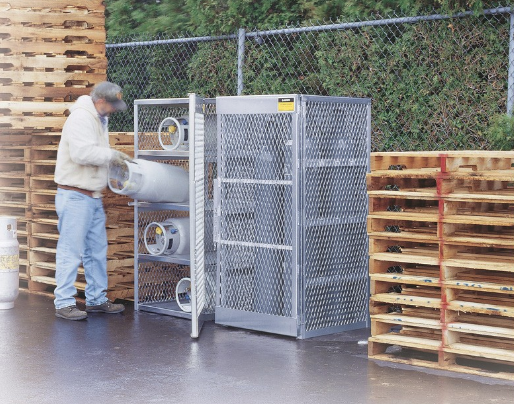
One of the more dangerous items that you’ll find at virtually every facility is the humble gas cylinder. In warehouses or manufacturing operations, you’ll find LPG (liquefied petroleum gas) canisters that power gas forklifts. You’ll also find vertical cylinders for welders, cutting torches, or other equipment operations. Too often, you will find them standing against a wall or on the dock with no protection at all.
How to Safely Store Gas Cylinders
Tags: security, gas cylinders, LPG tanks, propane tank storage
Posted in Safety & Ergonomics|
Shipping Docks & Safety: Dealing with Blind Spots
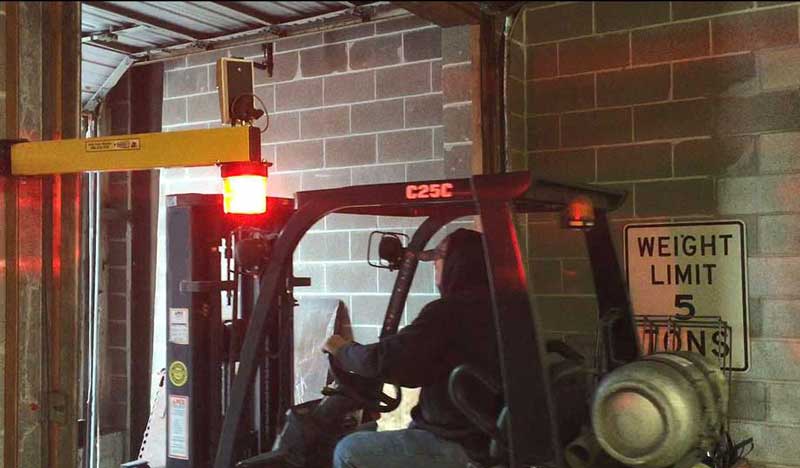
Shipping & receiving docks are a particularly dangerous area of most operations because so much activity takes place in a confined space. You have truck loading, unloading, staging, inspections, and much more. You have people like order pickers, drivers and guests potentially in the mix. In your average warehouse, the docks take up 20% of the square footage but host 80% of the activity. As you know, at times that activity can be fast-paced – even frenzied as full pallets are taken in, or loaded ones are being loaded into trailers. This is a time rife with possibilities for accidents. How can you prevent them?
Tags: dock layout, warehouse safety, forklift safety, shipping & receiving, Safety & Ergonomics
Posted in Docks & Shipping|
Forklift Safety: Don’t Blame the Driver
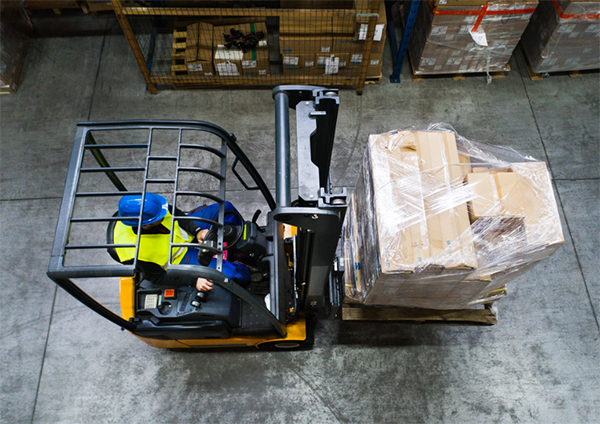
Most forklift accidents are blamed on operator error, but that is just partially true – and something of a cop-out. Rough estimates say that a quarter of forklift accidents could be avoided by addressing environmental concerns. When you eliminate those, it helps you understand better when a driver is truly ineffective, or just hamstrung by the way your warehouse is set up. In other words, before you point the finger at the driver, take a look at your operation. Read the rest of this entry »
Tags: OSHA, warehouse safety, forklift safety
Posted in Forklift - Pedestrian Safety|
Vertical Lift Allows Safe Passage at University of Texas Stadium
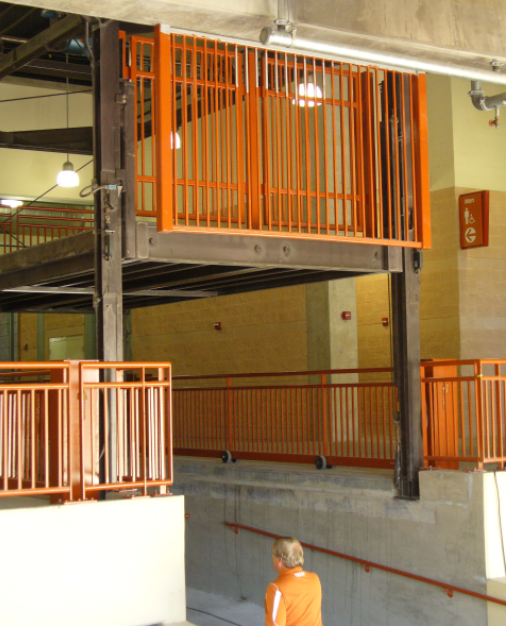
Typically, you see Vertical Lifts deployed in heavy industrial settings. They’re frequently used in multilevel facilities, in manufacturing plants, or paired with a mezzanine. Cisco-Eagle’s Houston office broke that mold by implementing a lift in a unique application: to help the University of Texas marching band access the field.
Tags: Material Handling, pflow, vrc, Lifts
Posted in Lifting & Lift Systems|
Guide to Forklift Safety for Pedestrians
Take a few minutes to watch this video from WorkSafeBC on how to prevent forklift injuries from a pedestrian’s point of view.
As a pedestrian in a forklift environment, it’s your responsibility to keep yourself safe. Anyone who runs a warehouse or industrial facility understands the dangers, and drivers should be trained. Do you train the pedestrians, the order pickers, the managers, and vendors who sometimes roam your facility and are exposed to forklift traffic? Watch the video. It’s 12 minutes long, and worth every second.
Tags: Manufacturing, industrial safety, warehouse safety, storage systems, forklift safety, warehousing, Pallet Rack
Posted in Forklift - Pedestrian Safety|
Warehouse Safety: Distracted Forklift Drivers

If you’ve ever stopped at a traffic light, and shuddered at the texting, teenage (or all too often, an adult) driver in the next lane, you probably thought this is an irresponsible person who shouldn’t be behind the wheel. Given statistics that smart phone users are impaired as drunk drivers, it’s a serious and deadly issue; most states have laws specifically forbidding texting on the road. The question is, do you tolerate that kind of distractions for forklift drivers in your warehouse? Should you have the same rules? (Short answer: yes).
Tags: warehousing, Pallet Rack, forklift safety, distracted driving
Posted in Forklift - Pedestrian Safety|
Ways to Protect Overhead & Dock Doors from Forklift Damage
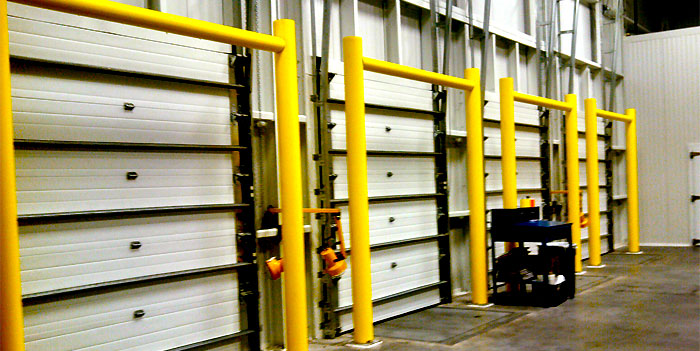
Walk any warehouse, manufacturing facility, or commercial storage operation and you’ll almost always find two things: forklifts and dock doors.
If that building has been in place for any length of time, you’ll also find dinged, dented, ruined or replaced dock door guides, pallet rack frames, building columns, etc. While many operations take steps to use guard rails or bollards to shield their critical machinery, dock doors can be left out.
Posted in Safety & Ergonomics|
10 Questions: Vertical Reciprocating Conveyor Specification
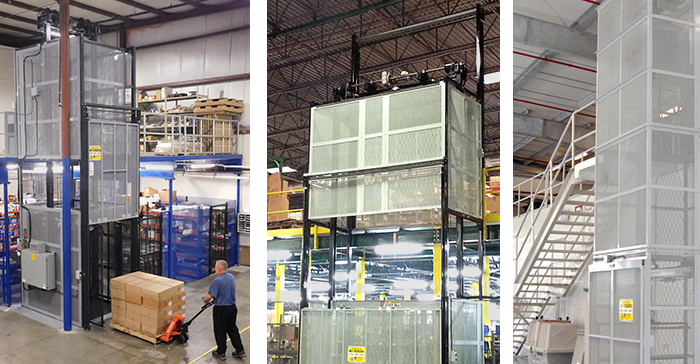
A few months ago, we posted a Guide to Vertical Reciprocating Conveyors (you might find it useful if you’re looking at any application that moves a load up and down at least one level integrated with a shaft, mezzanine or other area). That guide includes the following questions, should be helpful as you move ahead with your project.
Tags: vertical lifts, vrc, mezzanine lifts, Automation, warehousing, Material Handling
Posted in Lifting & Lift Systems|
More Pallet Rack Safety Tips
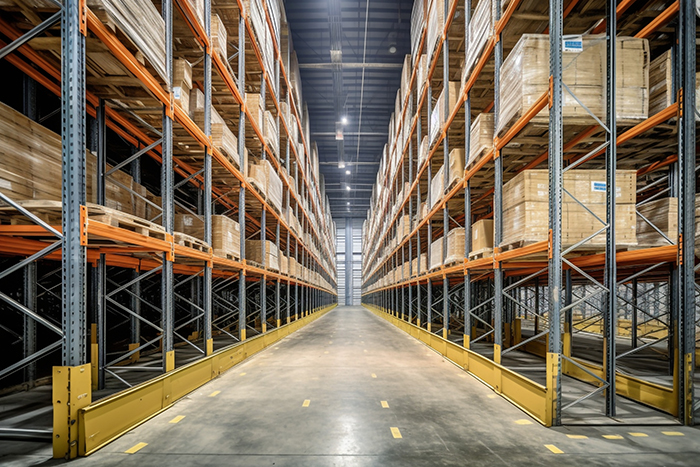
Safety in warehouses tends to be greatly about the interactions between forklifts, pallet racks, people and stored products. This list of rack safety tips is part of our ongoing efforts to help warehouses operate safely and efficiently.
Tags: Material Handling, Pallet Rack, warehouse safety, storage, industrial accident prevention
Posted in Pallet & Warehouse Racks|



